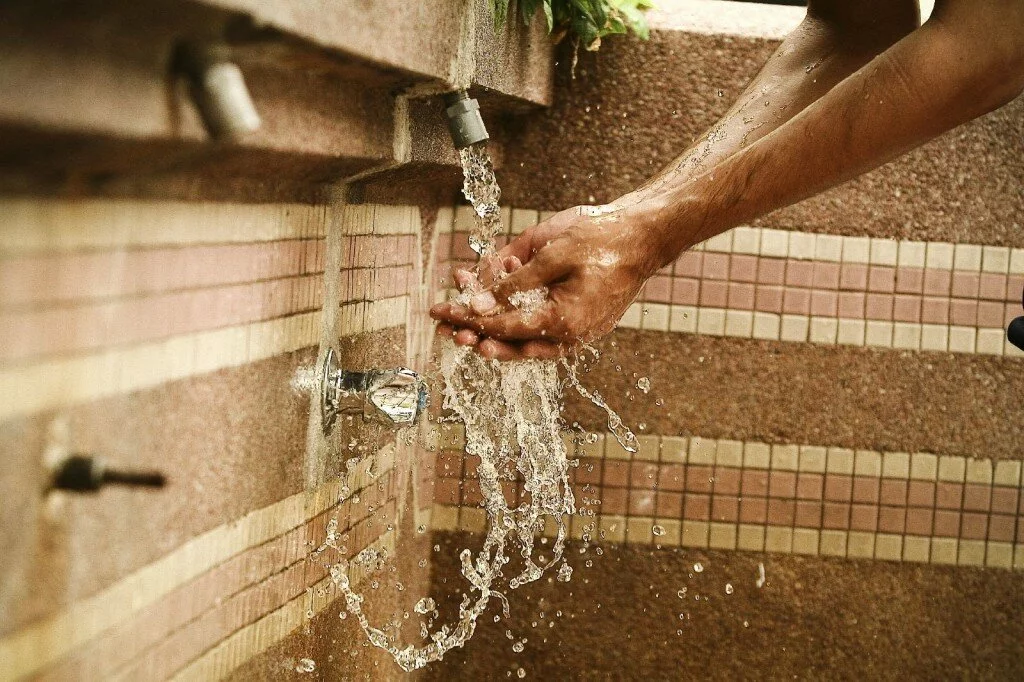When I first learned about a wudhu that was environmentally friendly, I didn’t understand how clean water could get any ‘greener’. After five years of practice, one pilgrimage (hajj) and cold water however, I have proof that wudhu can be part of the eco deen.
Ablution
Borrowing a chapter title from Ibrahim Abdal-Matin’s Green Deen book, the wonderful world of wudhu begins with a Muslim’s relationship to water.
Wudhu is a ritual where Muslims immerse themselves in a routine purification before prayer and every act of worship. It’s essential to connecting with God and seeing His signs – water from rain, a lake, small streams to oceans, or a running tap.
The ablution consists of an important routine – rinsing the mouth 3 times, the nose, washing the whole face 3 times, each forearm, the top of your head, behind the ears, neck, and between each toe. Each movement with water physically washes away dirt and in essence the negative actions of that limb.
The Prophet (peace be upon him) said, “cleanliness is part of faith” (tahoor shatril imaan). He also warned against “squandering water” even if next to a river, the Prophet always advocated an eco-wudhu.
We make wudhu up to five times a day, and the amount of water spilled can add up. I wrote about the ‘eco-beard’ on Green Prophet where it was reported up to 11 gallons of water is used per household on average. Most of this is wasted from keeping the tap running and more energy is eaten up by using hot water instead of cold.
As Muslims, wudhu can be a part of our eco lifestyle and a more conscious effort of resourcefully using one of our most precious blessings from God.
An eco-Wudhu
I haven’t perfected my wudhu and in those panic-last-minute-salah moments, I confess that I have left the tap running in the past. No more! Here are several winning ideas that could just make our wudhu more wonderful:
- Turns taps off: It sounds obvious but closing your taps when making wudhu will significantly change how you use water. Fill a pot or bucket for your ablutions. Use a glass to rinse your mouth. Take a jug of water with you outside and perform a spiritual wudhu in nature.
-
Check your wudhu count: For experimental purposes time how long it takes for you to complete wudhu while leaving the tap running on normal pressure.
- Next time place a bucket under the tap and leave the tap running for the same amount of time it took for you to do wudhu.
- Measure this water. This is your wudhu count.
- I measured my wudhu count which came to nearly 2.5 litres of water. The Prophet performed his wudhu in 16 handfuls! It isn’t a scientific test but it’s useful for directly seeing your water impact, and as the idea creator Ibrahim Abdal-Matin said, “Having a number can help you determine a goal for reducing that number.”
- Water saving toilets: Install a loo* (toilet) with an inlet valve that reduces the water volume used to flush clean, saving up to 25%. Regularly check for leaks. Green Building Store sells innovative WCs and flow limiting mechanisms that can reduce the water usage without affecting cleanliness.
- Get WudhuMate™: Personal hygiene is fundamental to the wudhu but does not come with practical solutions, especially in public restrooms. The WudhuMate (from Specwash.com) by Moazzam Ali is a unique water carrying pouch created specifically for such scenarios. It can hold 1 litre of water, is ergonomically designed with spout and folds away for discretion. The product can save water and save a lot of public bother.
These suggestions can be implemented in our homes and mosques. With enough awareness I hope to see a change in our value system so that while others have to perform their wudhu in dust, we’re not pouring away our blessings with water.
Image + flickr

